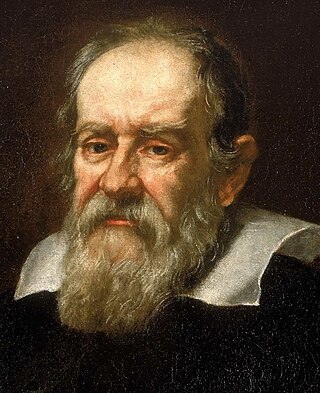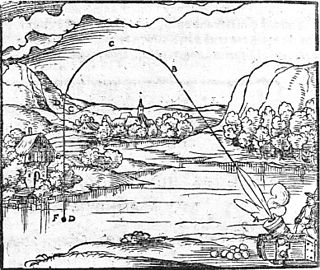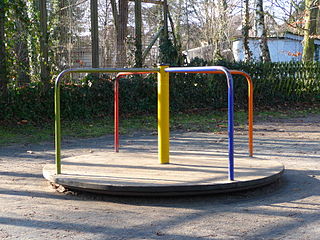| Part of a series on |
| Classical mechanics |
|---|
The following is a timeline of classical mechanics :
| Part of a series on |
| Classical mechanics |
|---|
The following is a timeline of classical mechanics :

In physics, physical chemistry and engineering, fluid dynamics is a subdiscipline of fluid mechanics that describes the flow of fluids—liquids and gases. It has several subdisciplines, including aerodynamics and hydrodynamics. Fluid dynamics has a wide range of applications, including calculating forces and moments on aircraft, determining the mass flow rate of petroleum through pipelines, predicting weather patterns, understanding nebulae in interstellar space and modelling fission weapon detonation.

Physics is a branch of science whose primary objects of study are matter and energy. Discoveries of physics find applications throughout the natural sciences and in technology. Historically, physics emerged from the scientific revolution of the 17th century, grew rapidly in the 19th century, then was transformed by a series of discoveries in the 20th century. Physics today may be divided loosely into classical physics and modern physics.
Inertia is the tendency of objects in motion to stay in motion and objects at rest to stay at rest, unless a force causes its speed or direction to change. It is one of the fundamental principles in classical physics, and described by Isaac Newton in his first law of motion. It is one of the primary manifestations of mass, one of the core quantitative properties of physical systems. Newton writes:
LAW I. Every object perseveres in its state of rest, or of uniform motion in a right line, except insofar as it is compelled to change that state by forces impressed thereon.
Mechanics is the area of physics concerned with the relationships between force, matter, and motion among physical objects. Forces applied to objects result in displacements, which are changes of an object's position relative to its environment.
Newton's laws of motion are three laws that describe the relationship between the motion of an object and the forces acting on it. These laws, which provide the basis for Newtonian mechanics, can be paraphrased as follows:

In physics, equations of motion are equations that describe the behavior of a physical system in terms of its motion as a function of time. More specifically, the equations of motion describe the behavior of a physical system as a set of mathematical functions in terms of dynamic variables. These variables are usually spatial coordinates and time, but may include momentum components. The most general choice are generalized coordinates which can be any convenient variables characteristic of the physical system. The functions are defined in a Euclidean space in classical mechanics, but are replaced by curved spaces in relativity. If the dynamics of a system is known, the equations are the solutions for the differential equations describing the motion of the dynamics.
In Newtonian physics, free fall is any motion of a body where gravity is the only force acting upon it. In the context of general relativity, where gravitation is reduced to a space-time curvature, a body in free fall has no force acting on it.

In physics and mathematics, a brachistochrone curve, or curve of fastest descent, is the one lying on the plane between a point A and a lower point B, where B is not directly below A, on which a bead slides frictionlessly under the influence of a uniform gravitational field to a given end point in the shortest time. The problem was posed by Johann Bernoulli in 1696.
Solid mechanics is the branch of continuum mechanics that studies the behavior of solid materials, especially their motion and deformation under the action of forces, temperature changes, phase changes, and other external or internal agents.

In mathematics, a differential equation is an equation that relates one or more unknown functions and their derivatives. In applications, the functions generally represent physical quantities, the derivatives represent their rates of change, and the differential equation defines a relationship between the two. Such relations are common; therefore, differential equations play a prominent role in many disciplines including engineering, physics, economics, and biology.
In physics, mechanics is the study of objects, their interaction, and motion; classical mechanics is mechanics limited to non-relativistic and non-quantum approximations. Most of the techniques of classical mechanics were developed before 1900 so the term classical mechanics refers to that historical era as well as the approximations. Other fields of physics that were developed in the same era, that use the same approximations, and are also considered "classical" include thermodynamics and electromagnetism.

In physics, theories of gravitation postulate mechanisms of interaction governing the movements of bodies with mass. There have been numerous theories of gravitation since ancient times. The first extant sources discussing such theories are found in ancient Greek philosophy. This work was furthered through the Middle Ages by Indian, Islamic, and European scientists, before gaining great strides during the Renaissance and Scientific Revolution—culminating in the formulation of Newton's law of gravity. This was superseded by Albert Einstein's theory of relativity in the early 20th century.

The theory of impetus is an auxiliary or secondary theory of Aristotelian dynamics, put forth initially to explain projectile motion against gravity. It was introduced by John Philoponus in the 6th century, and elaborated by Nur ad-Din al-Bitruji at the end of the 12th century. The theory was modified by Avicenna in the 11th century and Abu'l-Barakāt al-Baghdādī in the 12th century, before it was later established in Western scientific thought by Jean Buridan in the 14th century. It is the intellectual precursor to the concepts of inertia, momentum and acceleration in classical mechanics.

A timeline of calculus and mathematical analysis.
In classical mechanics, Euler's laws of motion are equations of motion which extend Newton's laws of motion for point particle to rigid body motion. They were formulated by Leonhard Euler about 50 years after Isaac Newton formulated his laws.

The balance of angular momentum or Euler's second law in classical mechanics is a law of physics, stating that to alter the angular momentum of a body a torque must be applied to it.
"One of the most important of al-Biruni's many texts is Shadows which he is thought to have written around 1021. [...] Shadows is an extremely important source for our knowledge of the history of mathematics, astronomy, and physics. It also contains important ideas such as the idea that acceleration is connected with non-uniform motion, using three rectangular coordinates to define a point in 3-space, and ideas that some see as anticipating the introduction of polar coordinates."